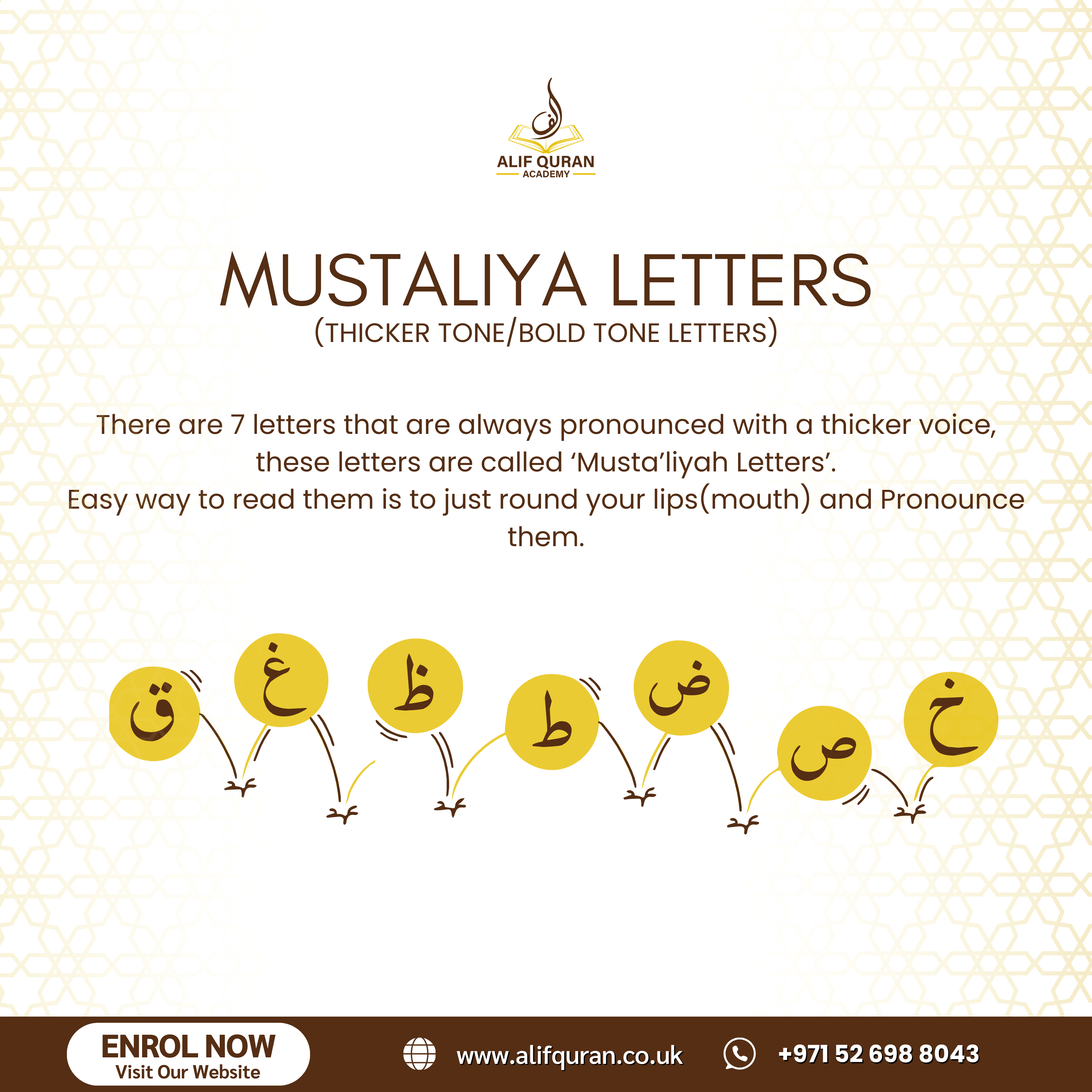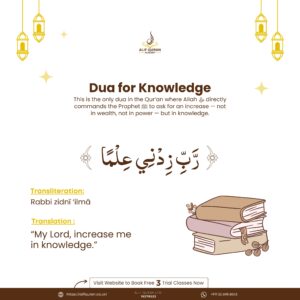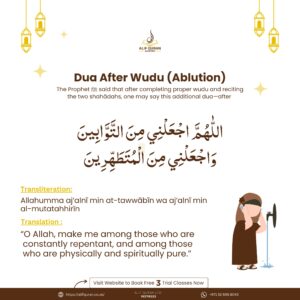MUSTALIYAH LETTERS

The image explains the concept of Mustaliyah Letters in Arabic pronunciation, particularly in the context of Quranic recitation. These are seven Arabic letters that are always pronounced with a thicker, bold tone, which means they have a deeper, more emphatic sound compared to other letters in the Arabic alphabet.
What Are Mustaliya Letters?
The term Mustaliya (مستعلية) means “elevated” or “raised”. These letters are called Mustaliya because their pronunciation requires raising the back part of the tongue towards the roof of the mouth (soft palate), creating a fuller and heavier sound.
The seven Mustaliya letters are:
- خ (Khaa)
- ص (Saad)
- ض (Dhaad)
- ط (Taa)
- ظ (Zhaa)
- غ (Ghayn)
- ق (Qaaf)
Characteristics of Mustaliya Letters
- Thicker Sound: These letters have a naturally heavy sound and require a deeper pronunciation.
- Tafkheem (تفخيم): The main characteristic of Mustaliya letters is tafkheem, which means “making the sound thick or full.” This happens due to the elevation of the tongue, which directs the sound towards the upper palate.
- Lip Rounding: When pronouncing these letters, the lips are slightly rounded, adding to their bold tone.
- Always Tafkheem: Unlike some other Arabic letters that can be pronounced with either a thick or thin sound depending on their context, Mustaliya letters are always pronounced with tafkheem, no matter their position in a word.
Pronunciation Tips
- Back of the tongue involvement: These letters require the back part of the tongue to be raised. This helps in creating a deep, heavy sound.
- Airflow control: Proper control of airflow while pronouncing these letters ensures they retain their bold quality.
- Mouth positioning: Keeping the lips slightly rounded and ensuring the tongue is positioned correctly helps in producing a more accurate sound.
Why Are Mustaliya Letters Important?
- Correct Quranic Recitation: In Tajweed (the science of Quranic recitation), proper pronunciation of these letters is essential for maintaining the correct meaning of words.
- Avoiding Mistakes: Mispronouncing these letters can alter the meaning of a word. For example:
- صَبر (Sabr – patience) vs. سَبر (Sabr – testing)
- ضالين (Dhallin – those who go astray) vs. ذالين (which does not exist in Arabic).
- Enhancing Arabic Pronunciation: Learning to pronounce Mustaliya letters correctly improves overall Arabic pronunciation, making speech clearer and more authentic.
Practical Application in Tajweed
When reciting the Quran, proper articulation of Mustaliya letters is crucial. They cannot be “lightened” or softened; instead, they should always maintain their heavy, elevated tone. For example:
- In Surah Al-Fatiha (1:7) – “وَلَا ٱلضَّآلِّينَ” (wa laa d-dhalliin), the letter ض (Dhaad) must be pronounced with a thick sound.
- In Surah Al-Qadr (97:1) – “إِنَّآ أَنزَلْنَـٰهُ” (Inna anzalnahu), if the ق (Qaaf) appears, it should be pronounced deeply.
FAQ
What are my child's strengths and areas for improvement?
Understanding your child’s academic and social skills helps identify where they excel and where they may need additional support.
How can I support my child's learning at home?
Teachers can offer suggestions for activities or resources to reinforce classroom learning, enhancing your child’s educational experience outside of school.
How does my child interact with peers and teachers?
Inquiring about your child’s social interactions provides insight into their relationships and social development within the school environment.
What are the key skills my child is expected to learn this year?
Knowing the essential grade-level skills in subjects like math and reading helps you understand academic expectations and monitor your child’s progress.









